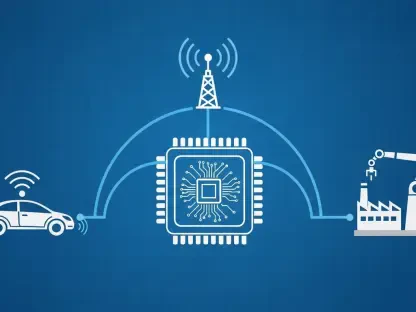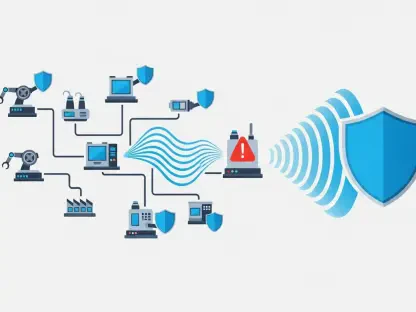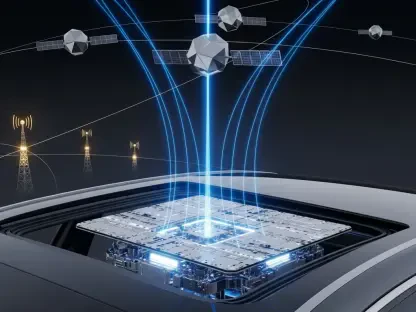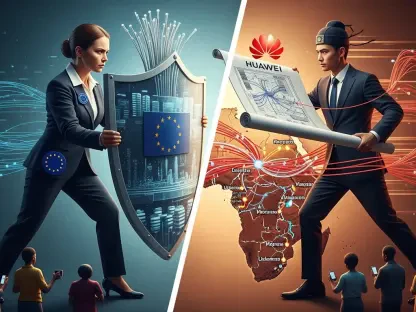In an era where global connectivity is more critical than ever, SoftBank, a leading Japanese telecommunications powerhouse, is forging a groundbreaking path with its innovative focus on optical wireless communication for low Earth orbit (LEO) satellites and high altitude platform stations (HAPS). Partnering with Japan’s National Institute of Information and Communications Technology (NICT), Kiyohara Optics, and ArkEdge Space, the company is exploring light-based systems as a transformative alternative to conventional radio frequency methods. This ambitious initiative aims to deliver faster data transmission while bypassing the regulatory complexities of frequency allocation. By pushing the boundaries of non-terrestrial networks (NTN), SoftBank is not only addressing the challenges of connecting remote and underserved regions but also setting a new standard for high-speed communication from space and the stratosphere. This development signals a potential revolution in how telecommunications infrastructure evolves to meet escalating global demands.
Revolutionizing Data Transmission with Light-Based Technology
The core of SoftBank’s pioneering project lies in the development of optical wireless communication, a technology that harnesses light to achieve high-speed data transfer. Unlike traditional radio wave systems, this method offers significantly higher bandwidth and eliminates the need for wireless licenses or frequency allocation, presenting a streamlined approach to connectivity. However, the reliance on ultra-narrow, highly directional beams introduces substantial hurdles, particularly in maintaining stable links over vast distances. In the harsh environments of space and the stratosphere, factors such as radiation exposure and temperatures dropping to -90°C further complicate the deployment of this technology. SoftBank and its collaborators are addressing these issues by designing compact, energy-efficient devices capable of transmitting data at 10 Gbit/s, ensuring they can withstand the rigors of extreme conditions through meticulous engineering and testing protocols.
Complementing the technical innovation is a strategic focus on real-world applicability, as SoftBank aims to integrate optical wireless systems into practical non-terrestrial network solutions. The challenges of beam stability are being tackled through advanced algorithms and precision hardware, which are critical for maintaining connectivity between fast-moving satellites and ground stations or HAPS. Additionally, the energy efficiency of these devices is paramount, as power constraints in space and high-altitude environments necessitate sustainable designs. By prioritizing lightweight construction without sacrificing performance, the project seeks to create systems that are both robust and adaptable. This endeavor not only highlights the potential of light-based communication to outperform traditional methods but also underscores the importance of overcoming environmental and logistical barriers to make such technology viable for widespread use in the telecommunications landscape.
Strategic Collaborations and Key Testing Phases
SoftBank’s initiative thrives on a collaborative framework, uniting expertise from NICT, Kiyohara Optics, and ArkEdge Space to address the multifaceted challenges of optical wireless communication. This partnership pools resources and knowledge to innovate solutions that could redefine connectivity from space to Earth. Significant milestones are on the horizon, with a LEO satellite launch scheduled for 2026 to test space-to-ground optical communication. Following this, a more complex experiment in 2027 will aim to establish bidirectional links between a HAPS in the stratosphere and a LEO satellite over distances up to 2,000 kilometers. These demonstrations are crucial for validating the technology’s effectiveness under real-world conditions, providing data that could accelerate its integration into broader NTN frameworks and shape future standards for satellite and aerial communications.
Beyond the planned tests, the collaborative effort extends to refining the technology for scalability and reliability across diverse applications. The upcoming demonstrations are designed to assess not just connectivity but also the resilience of optical systems against atmospheric interference and mechanical stresses encountered in space and high altitudes. Success in these trials could position SoftBank as a frontrunner in the race to commercialize advanced non-terrestrial communication solutions. Moreover, the insights gained will likely inform adjustments in design and deployment strategies, ensuring that the technology meets the stringent demands of global telecommunications providers. This collaborative push exemplifies how interdisciplinary partnerships can drive innovation, turning ambitious concepts into tangible advancements that promise to enhance access to high-speed internet in even the most challenging and remote locations around the world.
Advancing HAPS as a Connectivity Platform
Parallel to its optical communication efforts, SoftBank is making remarkable strides in enhancing HAPS as a vital component of future telecommunications infrastructure. Working with Japan’s New Energy and Industrial Technology Development Organization (NEDO), alongside industry partners like Enax and Choshu Industry, the company is developing next-generation batteries and solar cells to support extended stratospheric flights. These advancements aim to overcome one of the primary limitations of HAPS—sustained operation in harsh, high-altitude conditions. By focusing on high-energy-density power solutions, SoftBank seeks to ensure that HAPS can serve as reliable platforms for long-duration missions, delivering uninterrupted connectivity from the sky to ground-based users in areas where traditional networks are impractical or absent.
Furthering this vision, SoftBank has already achieved a significant breakthrough with a successful field trial of a HAPS payload equipped to support 5G connectivity. This system functions as a floating base station, capable of establishing service links with mobile devices and feeder links to ground gateways. Such capabilities highlight the potential of HAPS to act as a flexible, aerial extension of terrestrial networks, particularly in underserved or disaster-stricken regions where rapid deployment of connectivity is critical. The integration of 5G technology into these platforms marks a step toward bridging the digital divide, offering high-speed internet access from the stratosphere. This dual focus on power innovation and advanced communication payloads illustrates a comprehensive strategy to position HAPS as a cornerstone of global connectivity solutions, adaptable to a wide range of geographic and situational challenges.
Shaping the Future of Global Internet Access
SoftBank’s initiatives in optical wireless communication and HAPS reflect a broader industry trend toward leveraging non-terrestrial networks to meet escalating connectivity demands worldwide. These technologies are poised to play a transformative role in addressing the digital divide, particularly in remote regions where laying terrestrial infrastructure is neither feasible nor cost-effective. By pioneering light-based systems that offer superior bandwidth and fewer regulatory constraints, SoftBank is tackling the limitations of conventional methods, setting the stage for a new era of high-speed communication. The emphasis on testing and validation ensures that these solutions are not just theoretical but grounded in practical, scalable applications that can reshape access to information on a global scale.
Looking ahead, the implications of SoftBank’s work extend beyond immediate technological advancements to influence long-term telecommunications policies and infrastructure planning. The successful deployment of optical wireless systems and 5G-enabled HAPS could inspire other industry players to invest in similar non-terrestrial solutions, fostering a competitive landscape that accelerates innovation. Moreover, these platforms hold promise for emergency response scenarios, providing rapid connectivity in the aftermath of natural disasters when ground networks are compromised. As SoftBank continues to refine these technologies through rigorous experimentation and strategic partnerships, the potential to deliver reliable, high-speed internet from space and the stratosphere becomes increasingly tangible, offering a glimpse into a future where connectivity knows no boundaries, geographical or otherwise.









